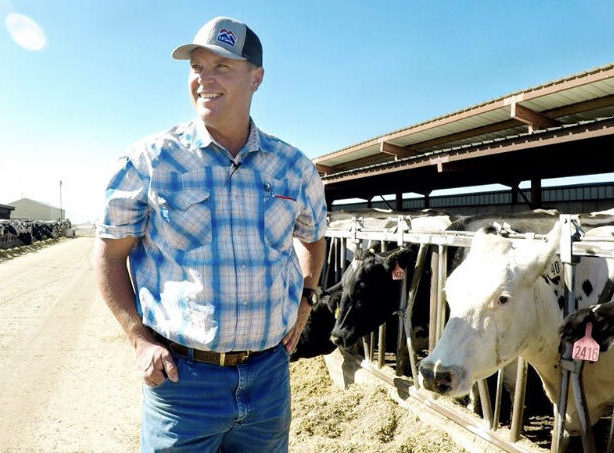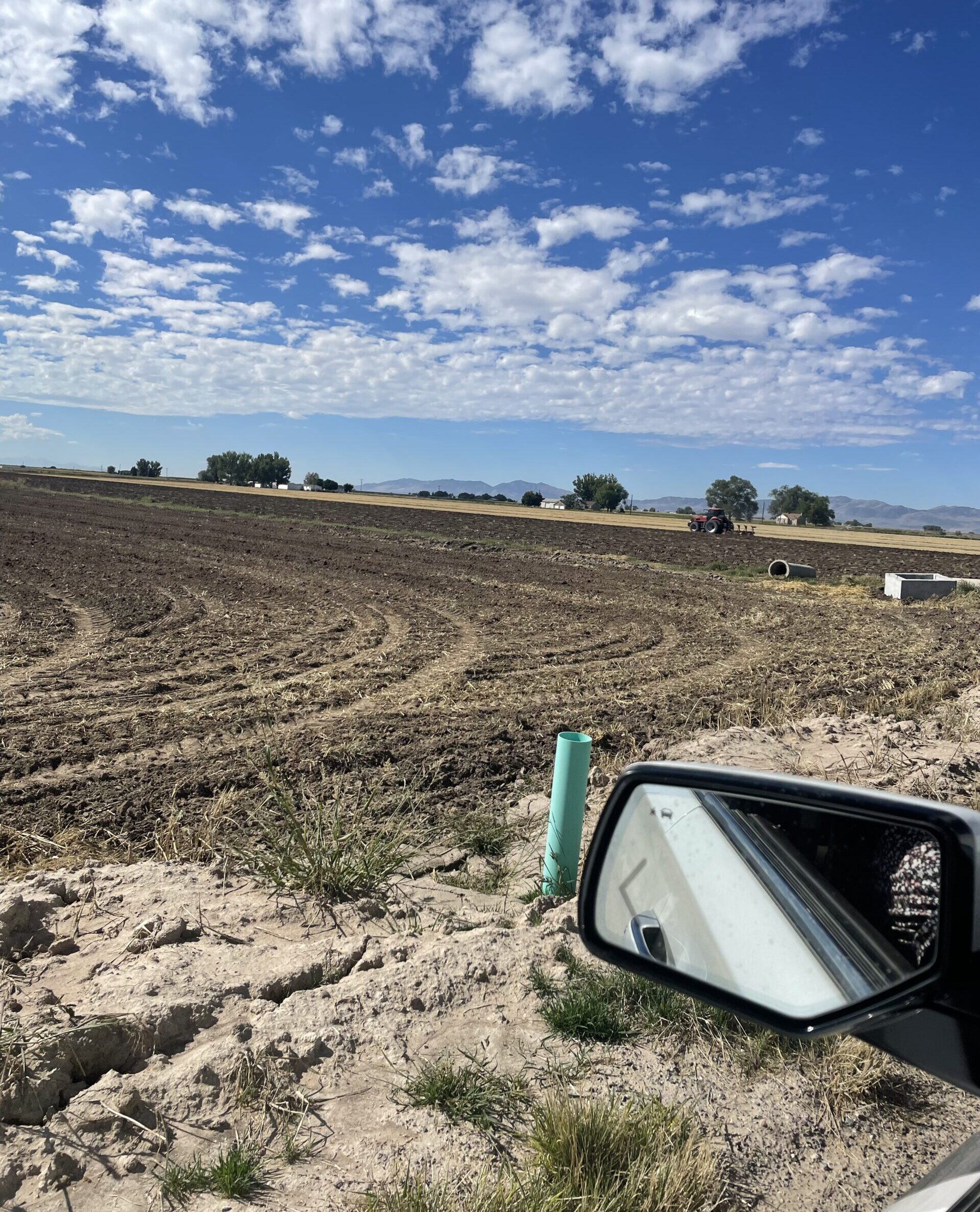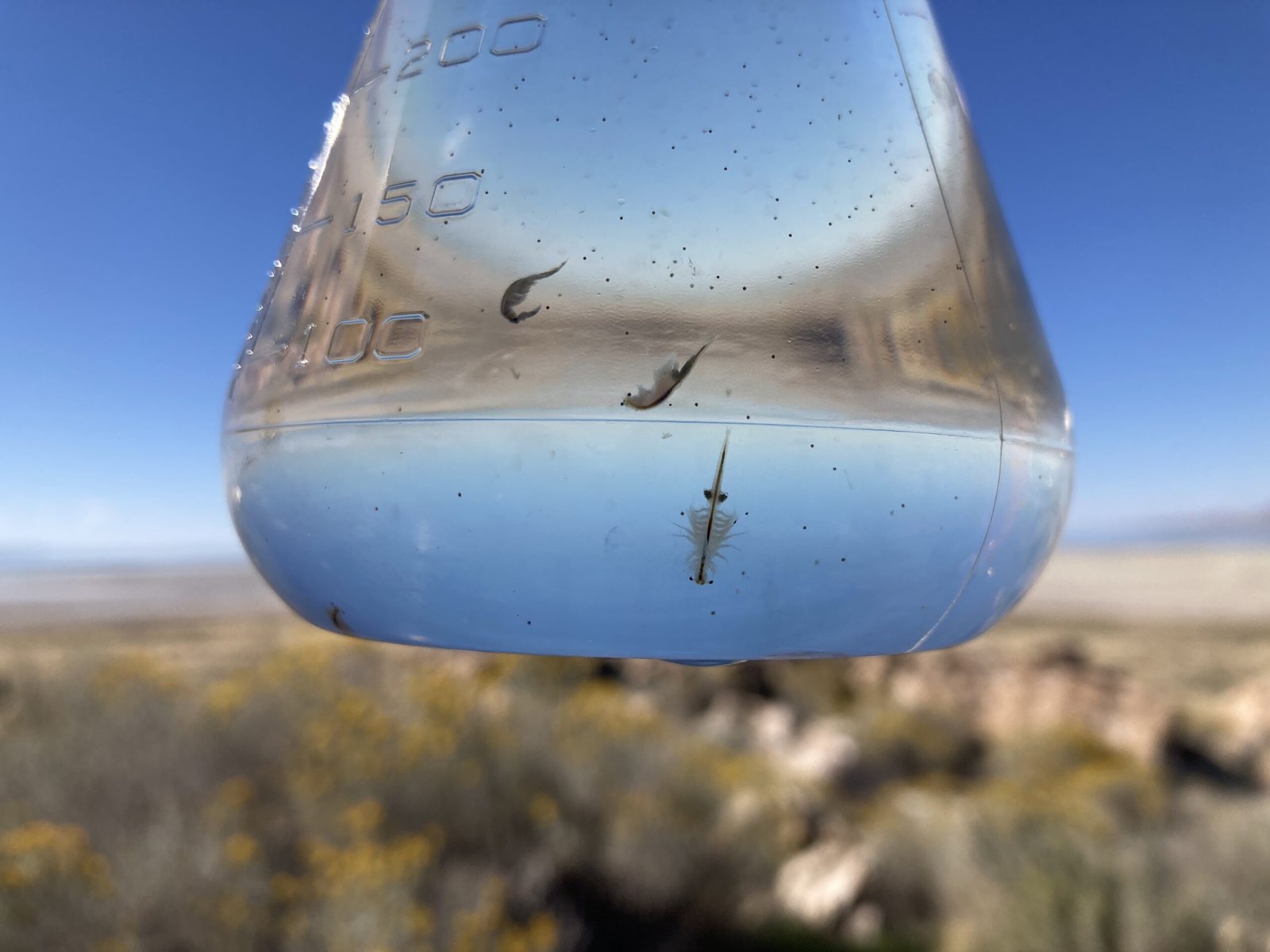


Waterline is an ongoing series of stories exploring the intersection of water, climate and food, told through the eyes of the people impacted by these issues. It is funded by a grant from the Walton Family Foundation.
The Bear River flows out of Wyoming’s Uinta Mountains, winding 350 miles through sagebrush meadows and agricultural fields in Idaho and Utah before it fans out into wetlands 50 miles north of Salt Lake City. It’s the longest river on the continent that does not drain into the sea, and the largest source of water filling the Great Salt Lake.
One of the river’s last stops before it reaches the lake is Mitch and Holly Hancock’s farm, NooSun Dairy. Like hundreds of other farmers, the Hancocks divert water from the Bear River to irrigate crops like alfalfa hay and corn that feed their 3,000 cows.


Since they live in the desert, the Hancocks spend a lot of time asking themselves how to protect and maximize their water, which Holly calls “one of our most valuable resources.”
“The only thing we can control on our farm is how efficient we are,” Holly explains. She was born on the farm in 1982, the same year her parents bought it. She says one of the family’s guiding principles for managing their business is: “How can we improve our processes so that we do more with less?”
Holly and Mitch recently made several improvements to their irrigation system to conserve water. They piped the farm’s earthen ditches so less water is lost to evaporation or seepage as it travels from the river to their fields. Mitch recounts that before the piping project, it took 45 minutes for water to reach one of their hay fields. Now it takes 45 seconds. “All that savings from point A to point B now stays in the lake,” Mitch says. “And every inch helps, right?”


Farmers and ranchers are key to helping solve Utah’s water crisis. In the face of a shrinking Great Salt Lake, irrigators like the Hancocks are stepping up to voluntarily conserve water in creative ways. And the benefits go both ways: Not only do such efforts keep the lake and its ecosystem alive, they also help agricultural producers grow food more efficiently.
Water is a particularly hot topic in Utah. The Great Salt Lake hit a record low in November 2022, shriveling its surface area to less than half of the historic average. This was a call to action for people throughout the region since the lake’s decline threatens to upend ecosystems and disrupt the local economy.
Water is a particularly hot topic in Utah. The Great Salt Lake hit a record low in November 2022, shriveling its surface area to less than half of the historic average. This was a call to action for people throughout the region since the lake’s decline threatens to upend ecosystems and disrupt the local economy. The lake pumps $2.5 billion into the state each year from industries like recreation, mineral extraction and harvesting brine shrimp. It supports 80 percent of Utah’s wetlands and 10 million migrating birds. And it even helps generate the powdery snow that draws up to seven million people per year to Salt Lake City to ski.
The 22-year-long megadrought in the American Southwest certainly played a role in shrinking the lake. But the main reason for its decline is that people are diverting water from the rivers that refill the lake. Three-quarters of the diverted water is used to irrigate crops — mainly grasses grown to feed cattle that produce beef or dairy, the state’s chief agricultural commodities. If people continue to use water at the current rate, the Great Salt Lake will likely disappear within five years, according to a report published by Brigham Young University in January.


Now for the good news: if agricultural and other outdoor water use is cut by one-third to one-half, the lake will likely refill to a level that can support local communities and the ecosystem. Voluntary conservation actions like the Hancocks’ irrigation upgrades are the most important — and most attainable — measures for keeping the Western Hemisphere’s largest saline lake alive.
Mitch believes that agriculture is sometimes framed as “the bad guy” because there’s a lack of understanding that farmers “want to be proactive” to help care for the water that sustains their business. He estimates that about half of the farmers in his area are participating in conservation projects.
That includes Joel Ferry, a fifth-generation cattle rancher. Like his neighbors, Ferry is setting an example of what he calls “water optimization”: growing as much or more using less water. On his family’s ranch, Ferry has installed 100,000 feet of irrigation pipe to replace leaking canals, and used a laser and GPS units to precisely level thousands of acres so the ground can be irrigated more efficiently. He also switched to no-till practices and cover crops and composting practices that all save water by not disturbing soil.